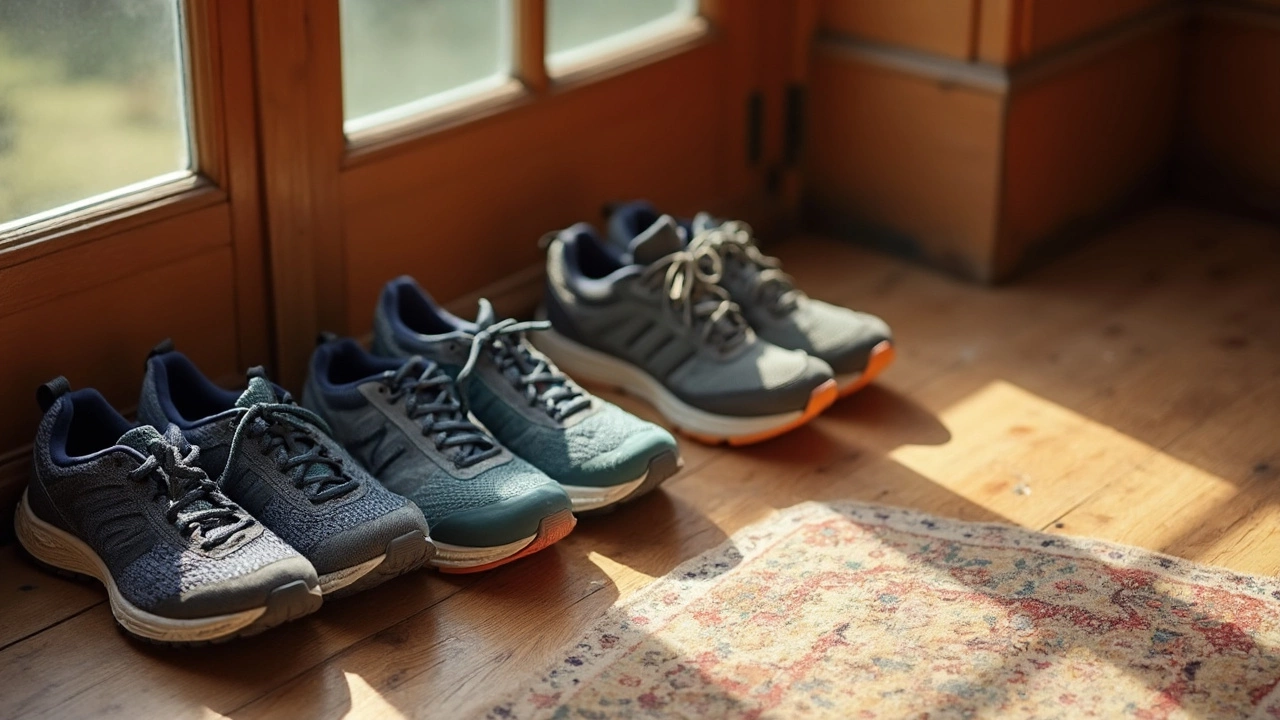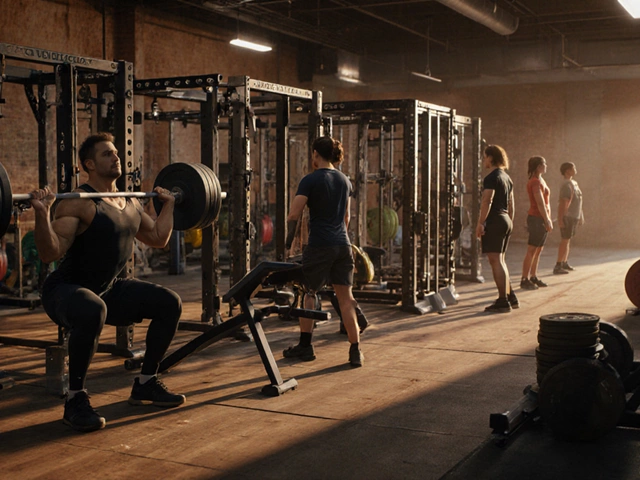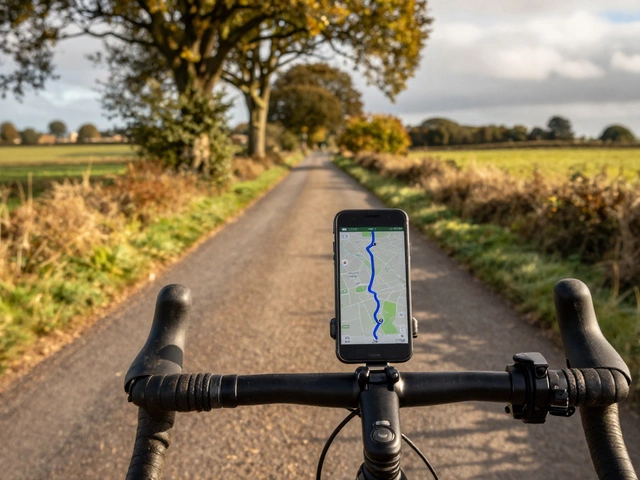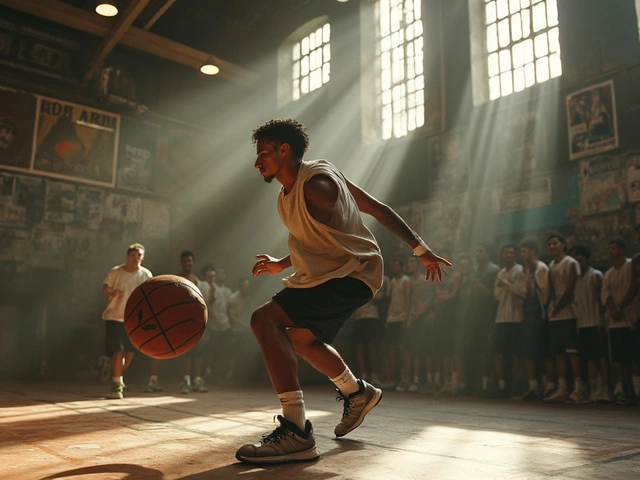
Running Shoes April 20, 2025
Can You Walk All Day in Running Shoes? Real-World Comfort and Surprising Facts
Ever slipped on your favorite running shoes for a trip that turned into a marathon day on your feet? You’re definitely not alone. Lots of people wear their running shoes for way more than just miles and sprints. But do they really keep your feet happy from sunrise to sunset?
Here’s the deal: most running shoes come packed with cushioning and support—it’s what makes them awesome for pounding the pavement. That same padding feels great when you’re strolling or stuck standing for hours. If you’re doing errands or chasing after kids all day, those squishy midsoles can make a big difference in how your legs feel when you finally crash on the couch.
But, not every running shoe is a magic slipper for endless walking. Some are built to boost your stride at top speed, not to keep you comfy at a slow pace or on hard surfaces all day. Your feet might even start to complain if the fit isn’t spot-on, the sole’s too stiff, or your shoes are wearing out.
If you keep grabbing your running shoes for daily adventures, it makes sense to know what’s going on under your feet. Tiny design details—like how the shoe bends, the padding’s thickness, or heel shape—can make all the difference, especially by hour eight or nine.
- How Running Shoes Are Built
- Walking vs. Running: Shoe Demands
- Pros and Perks of All-Day Walking
- Potential Problems and Drawbacks
- Choosing the Right Pair
- Everyday Tips for Maximum Comfort
How Running Shoes Are Built
If you’ve ever wondered why your running shoes comfort your feet on long days, it all comes down to how they’re put together. Each part does a job, and missing out on even one key feature can mess with how your shoes feel and perform.
Let’s break down the pieces:
- Midsole Cushioning: This is where most of the magic happens. Foam midsoles (like EVA or newer tech foams) absorb shock so your joints take less of a beating. Brands tweak their foam ingredients—think Nike’s React, Adidas’s Boost, or Brooks’s DNA Loft—to balance softness and bounce.
- Outsole Grip: The bottom of the shoe is usually rubber, made to stick to pavement or trails. Lighter shoes may have less rubber, but most solid running shoes comfort you with durable grip that handles wet and dry sidewalks.
- Heel-to-Toe Drop: This term just means how much higher your heel sits compared to your toes. For runners, a drop of 8-12mm is common, which helps shift your momentum forward. It matters because too much or too little drop can change how comfortable your shoe is for all-day walking.
- Upper Materials: The top part usually uses mesh or synthetic fabric that lets your foot breathe. Good uppers feel flexible and cut down on unwanted rubbing or blisters.
- Fit and Structure: Running shoes often use extra support features, like firm side walls or a locked-in heel, to stop your foot from sliding around. This can make all-day walking feel more stable for busy feet.
Here’s a quick look at how features stack up in common running shoes comfort:
| Feature | Running Shoe Design |
|---|---|
| Cushioning | High, focuses on shock absorption |
| Durability | Built for 300-500 miles |
| Weight | Usually light, 7-10 oz average |
| Flexibility | Moderate, allows foot to move naturally |
| Breathability | Mesh/synthetic uppers for airflow |
So when you’re debating if you can use running shoes comfort for all-day walking, knowing the tech behind them helps you match the right shoe to your routine. Don’t just pick by looks—pay attention to these build details and your feet will thank you later.
Walking vs. Running: Shoe Demands
Walking and running look pretty similar, but your feet don’t get the same treatment from each one. Running shoes comfort often comes from how much force they have to absorb—when you run, every step sends waves of impact up your legs. In fact, when your foot hits the ground running, it can take about three times your body weight. With walking, it’s closer to just one and a half times. Big difference for your joints and your shoes.
Running shoes usually pack more cushion in the heel and sometimes have a thicker sole. That’s great if you’re landing hard. But when you walk, your heel lands more gently and rolls forward slower, so you don’t always need that extra bulk. Too much padding might even feel awkward over long walks because it can throw off your step a bit.
The other key is flexibility. Good walking in running shoes happens when the sole can bend with the ball of your foot. Runners want a little stiffer shoe for toe-off power, but walkers need the sole to flex more so their feet don’t fight the shoe every step. Some running shoes are so stiff they’ll leave your feet tired after a day of errands or sightseeing.
- Walking shoes usually curve less and bend more through the forefoot.
- Running shoes have more ‘drop’ (the height difference between heel and toe), which helps runners move forward fast but can mess with your stride if you’re just walking.
- The tread on running shoes is usually built for grip on the run, not slow and steady walking on all surfaces.
If you’re using your running shoes as everyday all-day footwear, pay attention to these design differences. Some pairs fit both purposes great, others—not so much.
| Feature | Running Shoes | Walking Shoes |
|---|---|---|
| Cushioning | More, especially in the heel | Moderate, balanced throughout |
| Sole Flexibility | Stiff for push-off | Flexible for smooth roll |
| Heel-to-Toe Drop | Higher | Lower |
| Tread Pattern | Built for speed and grip | Built for traction and stability |
Matching the shoe to the activity just saves your feet some grief. But if your favorite kicks feel good after a long day, you’re probably doing it right.
Pros and Perks of All-Day Walking
If you’ve ever debated whether you should keep your running shoes comfort going all day, here’s some good news—they’re usually up for the job. Let’s break down why those running shoes can be just what your feet need on a busy day.
- Cushioning Galore: Most running shoes are built with extra shock absorption. That means less pounding for your heels and less tiredness in your arches, especially on hard pavement or tile floors.
- Great Support: The structure of a running shoe hugs your feet, helping keep your ankles lined up as you move. This takes pressure off your knees and back—proven by physical therapists to reduce aches after a long day.
- Lightweight Feels: You won’t find a lot of heavy materials in modern models. That’s a plus when you’re walking everywhere, since lighter shoes can help you feel less sluggish by the afternoon.
- Breathability: Running shoes often use mesh in the uppers, so your feet stay cooler and less sweaty. Nobody needs to deal with swampy socks halfway through the day.
One podiatrist from Runner’s World put it simply:
“Many running shoes outshine casual sneakers for all-day wear. The foam midsole gives all-over comfort, and the fit keeps most feet secure during steady walking.”
Check this out—research from the American Podiatric Medical Association found that 78% of people who switched to athletic shoes for daily wear reported less pain and improved mobility after two weeks.
| Feature | Benefit for All-Day Walking |
|---|---|
| Plush Midsole | Reduces foot fatigue |
| Stable Heel | Prevents ankle rolls |
| Deep Flex Grooves | Boosts natural stride |
| Roomy Toe Box | Stops toe cramping |
Bottom line? If your walking in running shoes habit works for you, there’s a lot to like. The perks go way beyond looks—they’re about staying comfy, mobile, and ready for anything your busy day throws at you.

Potential Problems and Drawbacks
Walking all day in running shoes comfort might sound like the perfect plan, but there are a few pitfalls to watch out for. First up, running shoes are made with movement in mind—lots of forward motion and impact. If you’re mainly strolling or standing, the features that help runners can sometimes work against you.
One big issue: the outsole. Most running shoes have flex grooves and soft rubber in places that match a runner’s stride. Wear those same shoes all day on concrete, and you might notice the bottom wearing out way faster, especially if you always walk on the same part of the sole. This uneven wear can mess with your posture and cause sore ankles or knees.
Next, there’s arch support. Not all running shoes comfort is created equal. Some shoes focus on cushioning but skip real arch support, especially in lightweight or minimalist models. After several hours of walking, you might feel that annoying ache under your arch, or even heel pain if your steps add up to several miles.
Another thing—breathability. Running shoes use mesh for airflow during workouts, but if you’re in them for 10 hours straight, sweat and heat can build up. Hot, damp feet lead to blisters, nasty smells, and even athlete’s foot. If you have wide feet or high arches, shoes that feel snug at first might leave you with red spots or cramping after a full day.
- Running shoe soles often wear down unevenly if used mainly for walking.
- Poor arch support can lead to foot fatigue or pain over long hours.
- Moisture and heat from all-day use can cause blisters and odor issues.
- Some models are stiffer or heavier—good for running, rough for all-day comfort.
There’s some real data to back this up. The American Academy of Podiatric Sports Medicine points out that walking shoes usually flex in the forefoot and have a lower heel, while running shoes are built with a higher heel to absorb impact. That higher heel in running shoes can throw off your walking stride if you log a ton of steps each day.
Bottom line: running shoes are handy, but if you’re using them for everyday errands or travel, stick to pairs that feel good after hours—not just minutes.
Choosing the Right Pair
If you want to use running shoes comfort for a full day, it’s all about picking the right model. Not all running shoes treat your feet the same, especially after eight hours on the go. First off, think about cushioning. Look for midsoles with enough give to absorb shock, but not so much they feel squishy and unstable. Some folks like soft foam (like what you get with Brooks Ghost or Asics Gel Nimbus), while others swear by something a bit firmer, like New Balance 880s, for that steady support feel.
Arch support doesn’t just matter for runners—a little lift can seriously help when walking on hard floors. If you have flat feet or need extra arch help, check for shoes with built-in arch support or the option to swap in custom insoles. Also, the walking in running shoes experience often comes down to fit. Your toes need room to wiggle, and you should have about a thumb’s width between your longest toe and the end of the shoe. Tight shoes are a recipe for sore spots and blisters.
Let’s get specific. Shoes like Hoka Bondi, Nike Pegasus, and Saucony Triumph are popular with people who walk a lot due to their all-day comfort and solid structure. Meanwhile, racing shoes or ultralight trainers that are made for fast-paced runs can leave your feet feeling tired or even achy if you spend hours walking in them.
Another tip: check the outsole. You want decent grip if you’re walking outside, especially on mixed surfaces. Run your finger along the sole—if it’s mostly flat and smooth, it won’t give you as much traction or last as long with heavy walking.
Here’s a snapshot from a 2023 community poll about favorite all-day all-day footwear among folks who stand or walk for hours:
| Shoe Model | Popularity (%) |
|---|---|
| Brooks Ghost | 24% |
| Hoka Bondi | 19% |
| Nike Pegasus | 15% |
| ASICS Gel Nimbus | 13% |
| Others | 29% |
When possible, try on shoes late in the day to match your foot’s natural swelling. And if you’re buying for long shifts or lots of errands, don’t be afraid to walk around the store for a bit. That’s the real test. Trust your feet—not just the marketing.
Everyday Tips for Maximum Comfort
If you want to make the most out of your running shoes comfort for all-day wear, it’s all about dialing in those little details. A few tweaks make a huge difference in how your feet feel by the end of a long day.
- Get the Right Fit: Feet swell during the day, so shop late afternoon, and bring the socks you’ll wear most. Shoes that pinch at the start will only get worse. There should be a thumb’s width from your big toe to the front of the shoe.
- Rotate Shoes: If you own more than one pair, switch them up. This not only keeps cushioning fresh but also helps cut down on odor and bacteria.
- Swap Out Insoles: The flimsy insoles running shoes ship with usually aren’t designed for serious walking. Pick up a comfy, supportive insole at the store. A 2022 consumer survey found 64% of walkers felt less foot fatigue when using premium insoles.
- Socks Matter: Moisture-wicking, padded socks can prevent blisters and sweat. Cotton is old news — go for synthetic blends or merino wool.
- Mind the Midsoles: Most running shoes lose about 30% of their bounce after 300 miles (about 480 km). If your steps feel flat or your legs hurt, check if your shoes are due for replacement.
- Break Them In: No matter how much you love the look, new running shoes need a few test walks before tackling a full-day outing.
When standing or moving all day, pay attention to pressure points and how your arch feels. Any pain or tingling means you might need to adjust lacing or rethink the shoe model for your daily routine. Here’s a quick breakdown to help track your shoe’s lifespan:
| Shoe Use | Expected Lifespan | Key Signs to Replace |
|---|---|---|
| Walking Daily | 6-9 months | Flattened midsoles, sore arches, worn tread |
| Running & Walking Mix | 4-7 months | Noisy heels, visible creases, less bounce |
The bottom line: good habits and a little shoe TLC keep your all-day footwear feeling great, whether you’re on errands or on your feet for work. Listen to your feet—they’ll usually tell you what’s working and what needs fixing.




